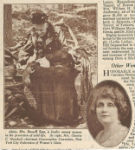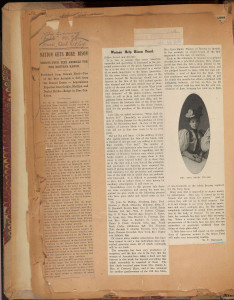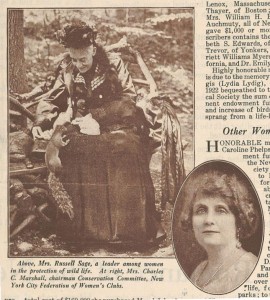 In the United States, bison once roamed in numbers greater than 20 million. However, over the course of the nineteenth century, the bison population plummeted to barely a thousand due to settlers, railroad development, and hunting.
In the United States, bison once roamed in numbers greater than 20 million. However, over the course of the nineteenth century, the bison population plummeted to barely a thousand due to settlers, railroad development, and hunting.
Although some thought the extinction of the American bison was an inevitable effect of civilized expansion into the West, many others believed that this symbol of American strength and power deserved a chance to thrive. In 1905, members of this latter group came together at the Bronx Zoo to found the American Bison Society with the goal of preventing the extinction of the American bison; the organization’s first success came in 1907 when they sent 15 bison by railway from the Bronx Zoo to Wichita Mountains Wildlife Preserve in Oklahoma to restore the western Plains’ depleted bison population.
In 1908, with Senator Joseph M. Dixon, William T. Hornaday (then Bronx Zoo Director and President of the American Bison Society) petitioned a bill to secure land in Montana that would provide space to increase and sustain a thriving bison herd. After years of petitioning, their bill for the protected land was passed on the contingency that the ABS also personally raise $10,000 to purchase a base animal population to begin proper breeding on their newly granted land. The conservation efforts of the Bronx Zoo and several private breeders provided a strong herd foundation, yet many more bison were needed to provide genetic variety.
And so the fundraising began.

Montana National Bison Range subscription flyer. In Hornaday Wildlife Scrapbook Collection, Vol. 2. WCS Archives Collection 1007.
The American Bison Society had no problem collecting funds from their members, among them Theodore Roosevelt, Andrew Carnegie, George D. Pratt, and other prominent businessmen. Though there were indeed several sizable member donations (or subscriptions) by the end of the process, the most surprising and encouraging support came from America’s concerned women. So concerned, in fact, that the very first subscription the Society received was from Mrs. Emma L. Mee, for the sum of $5.00. Mrs. Ezra R. Thayer, another notable contributor, raised a total of $510.00 for the Montana National Bison Herd project, a sum equal to one-twentieth of the total funds raised.

Women help bison fund. Forest and Stream, Dec. 19, 1908. In Hornaday Wildlife Scrapbook Collection. WCS Archives Collection 1007.
According to the Society’s Second Annual Report, 112 women altogether contributed to the fund, raising a total of $1,227.00. (The report also listed nearly two-dozen women listed as full-fledged members and nearly as many associate members.) The ABS assumed that there would be few substantial subscriptions from women, due to their minority representation. Pleasantly surprised by the final tally of donations, the Society complimented the women’s efforts by noting that this financial encouragement “has proven that he who thinks there is any laudable public enterprise that does not interest the intelligent women of America, makes a great mistake.”

Report of the president on the founding of the Montana National Bison Herd. ABS Annual Report, 1908-1909. In Hornaday Wildlife Scrapbook Collection, Vol. 2. WCS Archives Collection 1007.
By 1924, so much preservation aid had been given by the nation’s women that Hornaday felt the necessity to praise their efforts in print in the popular People’s Home Journal. Amid his frustration with various officials in getting his own preservation bills passed, he remembered that women also have an important role to play in keeping our country protected from the loss of wildlife.
The men are doing so poorly in certain kinds of game preservation, forest preservation and prevention of stream pollution that I declare my belief that the time has now arrived for the advent of women in the field of practical conservation…but, after all, this is by no means a wholly new field [for them].
Hornaday’s Journal article lists those women who have provided direct help, including Mrs. Russell Sage and Mrs. Charles Cyrus Marshall. Most notably in 1912, Mrs. Sage purchased 72,000 acres of Marsh Island and donated it to the state of Louisiana as a game sanctuary. In 1913, she took first position among the founders of the Permanent Wild Life Protection Fund with a gift of $25,000. Mrs. Marshall, Chairwoman of the Conservation Committee of the New York City Federation of Women’s Clubs, was also a strong advocate for wildfowl conservation.

Images of Mrs. Russell Sage and Mrs. Charles C. Marshall in What women have done for bird protection. People’s Home Journal, June 1924. In Hornaday Wildlife Scrapbook Collection, Vol. 9. WCS Archives Collection 1007.
Hornaday continues to list the dozens of other courageous women who have given their time to the conservation movement. His praise illustrated to the Journal’s readership the true power that women hold in their hands. As he wrote in closing the article, “I begin to believe that after the best of the sportsmen have said their last word, neither game nor sport will be saved unless this work is helped along by the women of America.”
This post is by Janine Veazue, MLIS, who worked during Summer 2013 with the WCS Archives as a Metadata Cataloger on our Hornaday Wildlife Protection Campaign Scrapbook Project.
In addition to serving as the first director of the Bronx Zoo, William T. Hornaday (1854-1937) was a pioneering force in the American wildlife conservation movement, and he spearheaded several lobbying and fundraising campaigns in support of wildlife. These campaigns he documented in scrapbooks, and the WCS Archives is now engaged in making many of these scrapbooks available online through the generous support of the Leon Levy Foundation. These scrapbooks are expected to be online in February 2014. In the meantime, posts like this one provide a preview, as well as some backstory, into the scrapbooks’ contents.

Perhaps maybe only a minor detail, but I was told that it was the Boone and Crockett Club that founded The American Bison Society; the history provided here states it was the Bronx Zoo folks that was the initial founding group. Maybe B & C, which was already present, came later to “take over” the ABS’s activities. Thanks, James Habeck, Emeritus prof of botany, Univ. of MT, Missoula, MT
Thanks for your comment, James. There was certainly a lot of crossover between the two groups, but the primary impetus for the ABS came from naturalist and writer Ernest Baynes and Bronx Zoo director William Hornaday. It was endorsed by Teddy Roosevelt, who I’m sure you know founded B&C, and Roosevelt was the first honorary president of ABS.